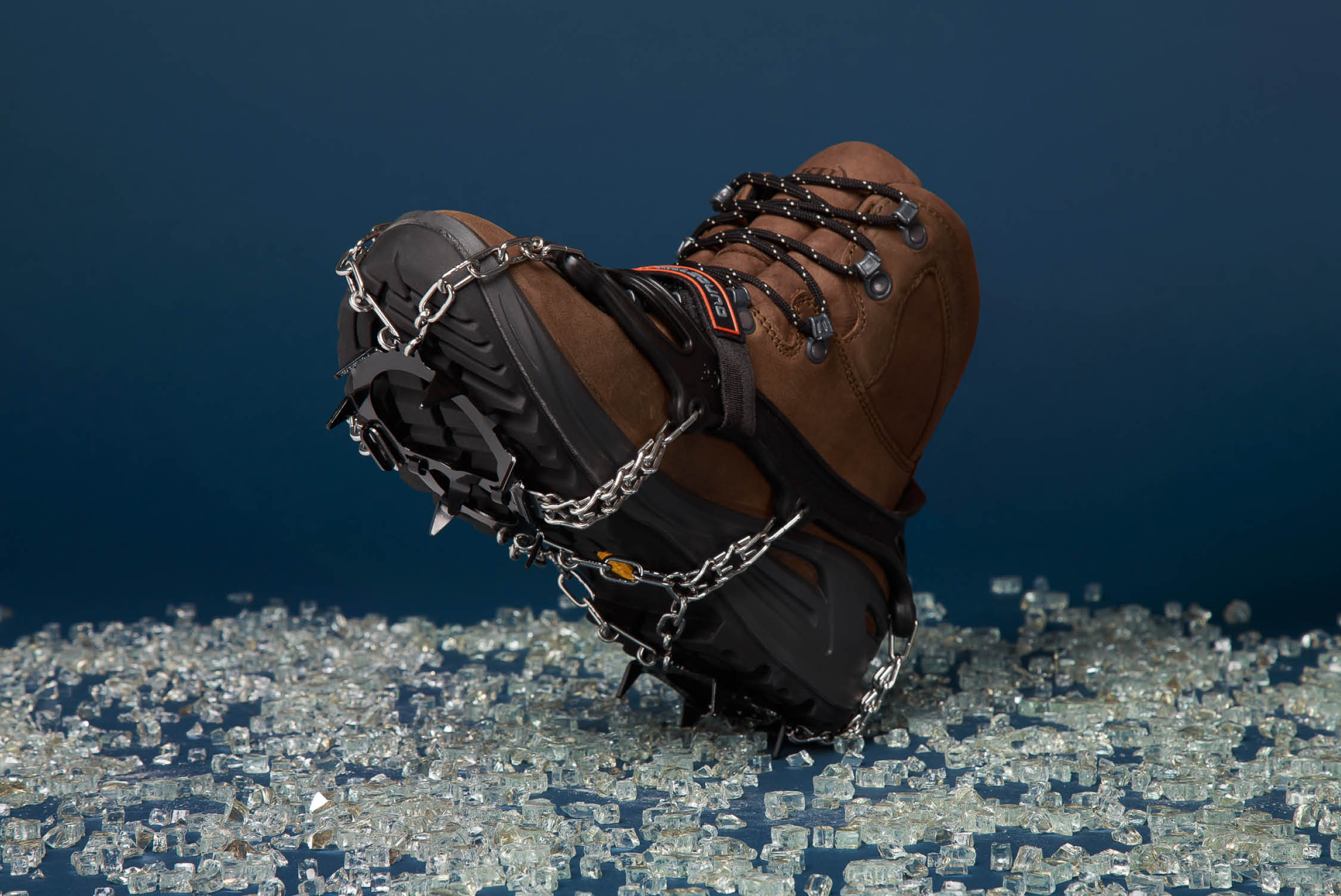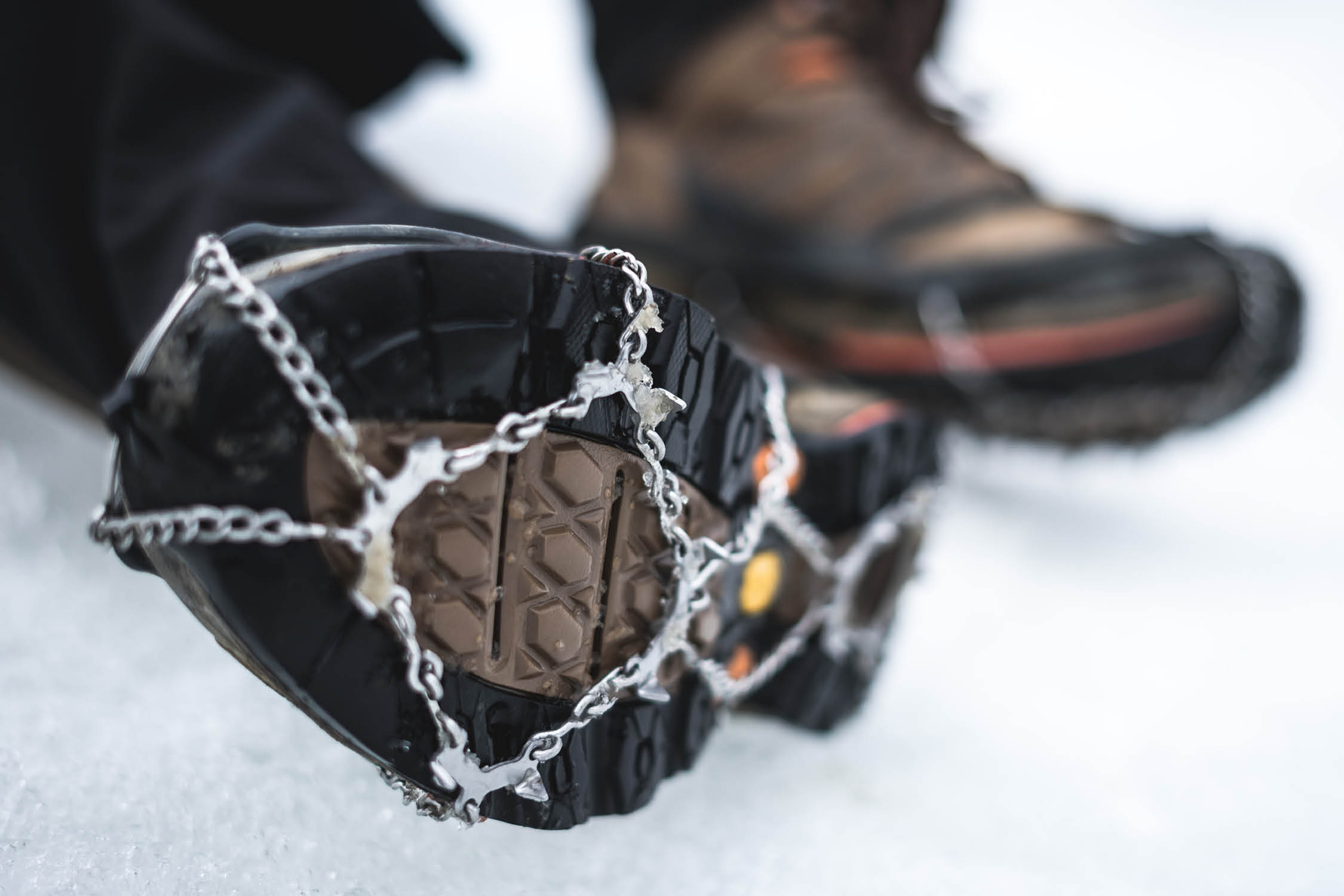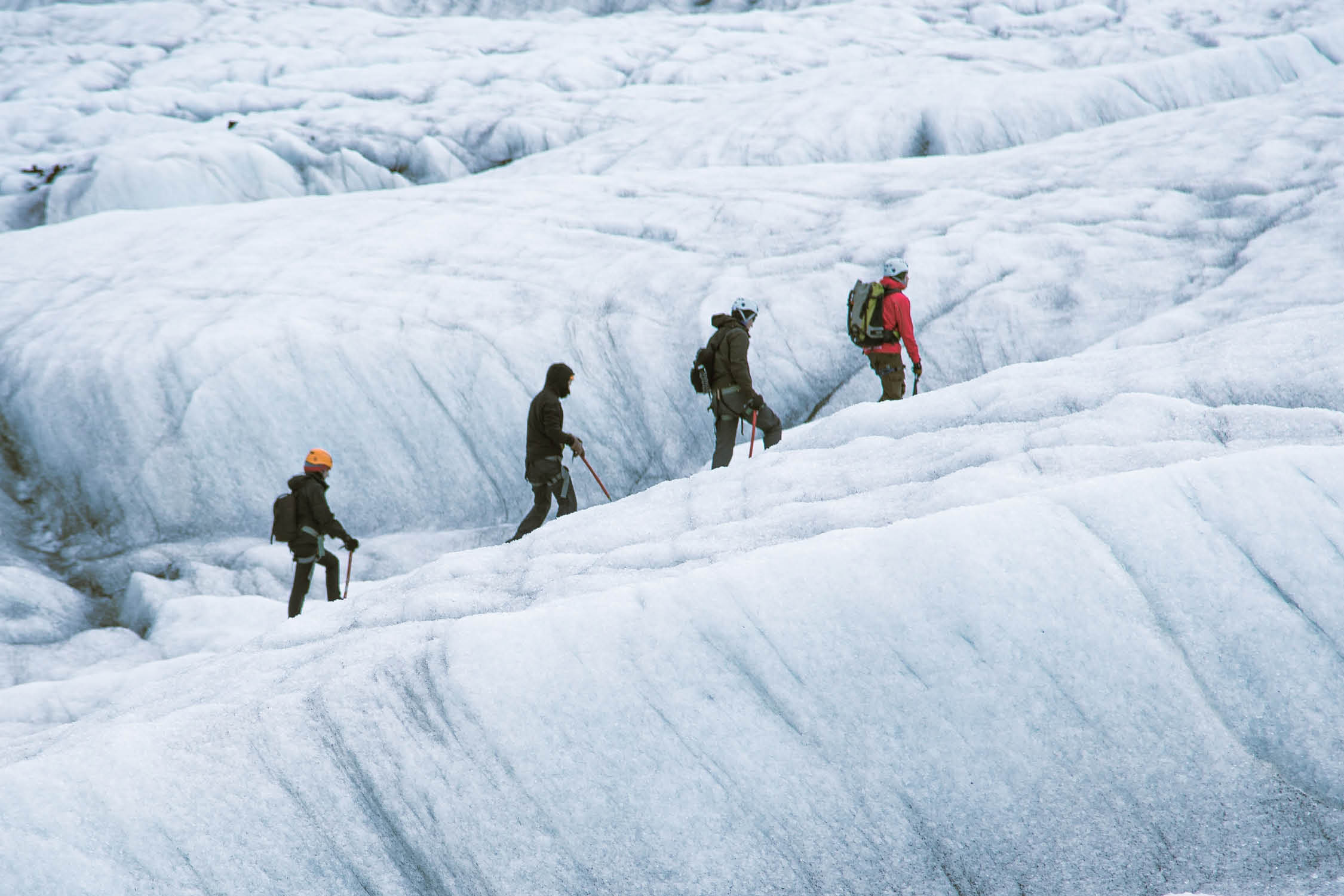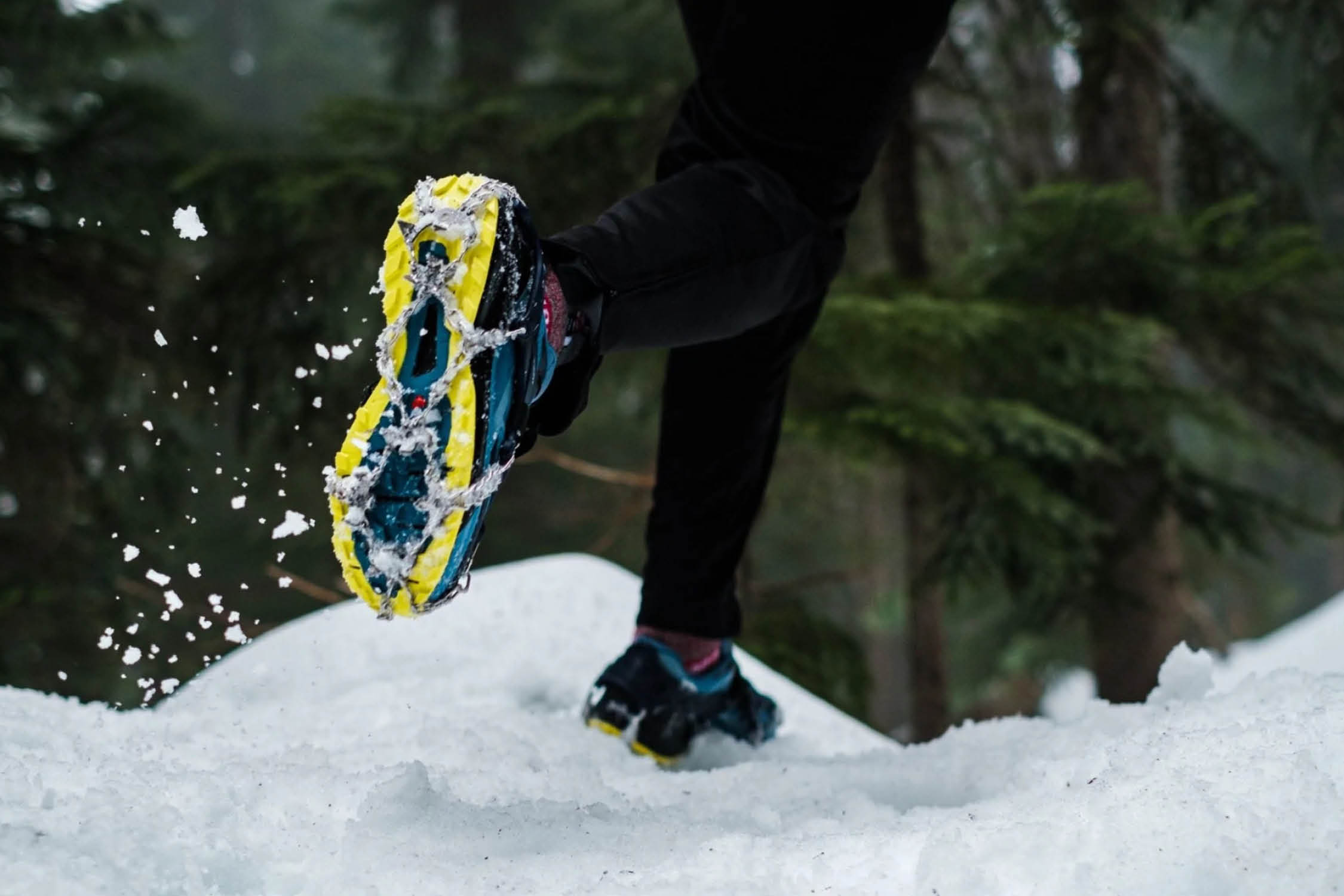How to break in your hiking boots
Outdoor Activities | March 26, 2024
SAIL
September 29, 2022

Every winter, it’s your biggest fear: slipping on a patch of ice and breaking something. The solution? Equip yourself with a good pair of crampons designed specifically for your favourite activity, whether that’s walking around the city, hiking or winter running. Here are our best tips to help you choose the right pair amongst the many options available on the market and ensure you are well equipped and ready to face winter’s tricky conditions with confidence.
In this article, you will learn more about:
The first thing you should know about crampons is that there aren’t any good or bad options; they each have their own advantages and inconveniences depending on the terrain you want to use them on: black ice, ice rain, compacted snow, or wet slushy snow. It is also important to narrow down your requirements by asking yourself the following questions: what will I use crampons for? Walking on city sidewalks? Hiking on groomed trails? Running in a nearby park?
No crampon model is polyvalent enough to work well in all these situations, and you may need to make a few compromises. But here are four key elements to look for so you can compare the various crampon models available in store and find out what you need:
The frame is the surface on which the points of the crampons are affixed. It can consist of one or two plates (at the front and at the back of the foot), be made of hard or flexible plastic (such as elastomer) or metal with a stainless-steel chain. You can also find a few steel spiral crampon models.
Metal is much heavier than plastic, but also much sturdier when it comes to walking over icy grounds. Elastomer offers the advantage of being flexible and stretchable, which can help put on your crampons more easily even while wearing gloves.
In any case, it’s important to ensure the model you choose fits well on your boot. Too tight and you’ll create painful pressure points, too loose and you’ll lack stability.
Crampon points are the little metal tips that bite into the snow and ice as you walk. They can be made of stainless steel, tungsten carbide or even hardened steel, all extremely tough materials. There are many types of points, including sharp teeth, multidirectional spikes, steel cleats or even beads or spirals (which offer the advantage of not damaging your backpack when using it to carry your crampons).
When it comes to crampons with sharp teeth, there is one thing to remember: the sharper the point, the more grip they will provide when walking on snow or ice.
It is possible for the points to become worn out after use. If it is the case, read the “pro tips” section at the end of this article to find out how to make them sharp again.
Depending on the model, you can find between five and over thirty points on a pair of crampons. There is a tendency to believe that the more points you have, the more grip they will provide, but it’s not always the case. How they are spread out over the sole is what makes the most difference. The points should be positioned both at the front and at the back of the foot, with some at a different angle so your crampons bite into the ice even when its surface is uneven.
Crampons have a binding system, so you can attach the frame to your boots. This a key consideration factor as it ensures you can easily put on and take off your crampons. Most models have an elastomer harness that’s ergonomically shaped to cover the base of your boot and keep the points firmly on your sole. This flexible material allows you to put on your crampons just as you would a pair of socks. When trying them on in store, make sure you bring the winter boots you’ll be using with you, so that you pick a model that’s the right size and fit.
For even more support, some crampons (such as hiking ones) come with an adjustable Velcro strap for the top of your shoe.
To discover what other essential gear you should take with you on your outdoor winter outings, read our article.
As mentioned previously, the crampons you choose will depend on the type of surface you’ll be walking on, and the activity you’ll be using them for. Most manufacturers do indicate the intended use on most models.

Kahtoola and GV offer easy-to-use urban crampons.

For this type of hiking, Hillsound’s products are a staple.

Black Diamond, well known amongst ice climbers, offers several light and high-performing models for those running on icy paths.
Some runners opt for running shoes with a very grippy sole to keep their footwear lighter. You can find a wide range of models here.
Others will choose to affix lugs (or to go in-store to get it done) directly onto the sole of their winter shoes.
Lastly, there are a few boot models which feature built-in swivelling and folding crampons on their soles. The goal is to render your boots as versatile as possible, and never get stuck when faced with a patch of ice. It should be noted that these types of boots are mostly designed for urban use.
You now know everything about winter crampons, which means you are ready to face the iciest of terrains anywhere in the province!